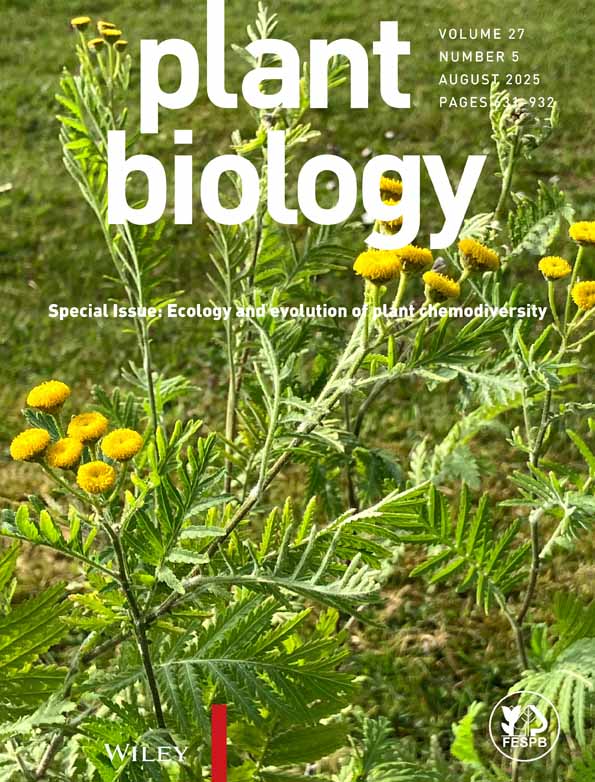The Tonoplast Localization of Two Basic Isoperoxidases of High pI in Lupinus
Abstract
The ultrastructural localization of peroxidase (EC 1.11.1.7) activity in cambial initial and xylem parenchyma cells of etiolated Lupinus albus hypocotyls (cv. Multolupa) revealed that, unlike phloem tissues, most of the enzymatic activity is located as dark electron-dense deposits on the tonoplast. Subcellular fractionation studies of plasmolyzed hypocotyls revealed that this enzymatic activity is apparently due to two basic peroxidase isoenzymes of isoelectric points 9.5 and 9.7 for B3 and B4, respectively. These isoenzymes are found mainly in young (5-day old) seedlings, and are probably involved, as indicated by other authors, in the metabolism of quinolizidine alkaloids in Lupinus species.




